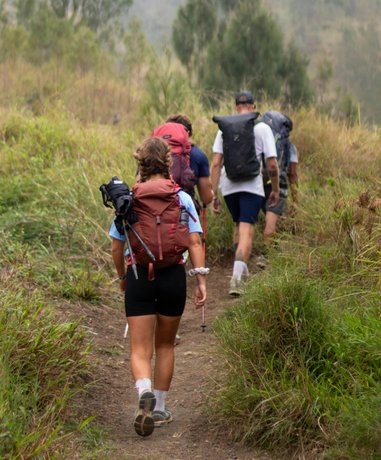
Call 0330 880 3600 Calls may be monitored or recorded. Opening Times.
- TRAVEL INSURANCE
- COVID-19 ENHANCED COVER
- More Options
- Help & Advice
- Existing Customers

Call 0330 880 3600 Calls may be monitored or recorded. Opening Times.
Cover for trekking, hiking, rambling, mountaineering and mountain walking up to 1000m
Protection for your trekking equipment
Instant online quotes for trekking travel insurance
Get a quoteOver 120+ activities are included free of charge
Trekking and mountain walking include a variety of outdoor walking activities such as hiking, rambling, and mountaineering, typically on trails or in rural, upland terrain. This cover applies specifically to routes up to 1000m in altitude, where no technical climbing skills are needed. These activities are ideal for those who enjoy being in nature and staying active, whether exploring gentle countryside or more rugged hills.
Yes. Even at altitudes up to 1000m, trekking and walking can involve risks like sprains, falls, or changing weather conditions. If you’re heading abroad to hike, ramble, or take part in organised mountain walks, travel insurance can help cover medical costs, trip cancellations, and the loss of personal belongings.

Our trekking travel insurance includes emergency medical cover, personal accident, and repatriation. It also includes equipment protection, cancellation cover, and personal liability support in case of accidents during your trek.
Not usually. Basic policies often exclude more adventurous activities. For walks or climbs up to 1000m, make sure you have a policy that specifically includes trekking and related pursuits.
Often, yes. You’ll need to declare your condition during the quote process so we can assess what cover is available. In some cases, special terms may apply.
Many policies offer cover up to age 70. If you're active and in good health, there are usually several options available. Always check individual insurer terms.
Even at lower altitudes, walking injuries can include:
Insurance can help with treatment costs, emergency transport, and covering missed trip days.